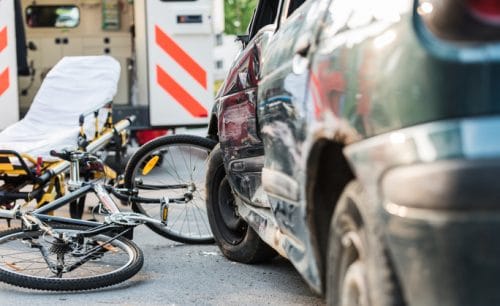
Many people who ride their bikes on a daily basis claim they will go to any length to avoid crossing streets. This may be more rational than it appears, given that over 60% of bike-car collisions occur at crossings. Continue reading to learn who is to blame for these collisions, then call The Law Offices of Larry H. Parker at 800-333-0000 if you believe you have a personal injury claim.
In bicycle and car accidents, who is at fault?
Bikes travel slower than vehicles in most circumstances, and persons on bikes are considerably more likely to be badly wounded than those in cars. As a result, many people believe that the automobile driver is more likely to be at blame. This is not always the case, which may come as a surprise to some. It’s important to remember that cyclists are expected to observe the regulations of the road. They are in charge of keeping an eye out for motorists.
Bicyclists should be conscious that their bicycles are smaller, less conspicuous, and hence more likely to go unnoticed. They should dress brightly and otherwise boost their visibility by wearing reflective clothes or having their bike outfitted with front and rear lights. They should also consider other factors that can make it difficult for a driver to see them, such as the sun, rain, or darkness.
Liability in bicycle and automobile collisions
Both bicycles and automobiles are vehicles. When they collide at an intersection, the law usually favors the one who had the right of way. There are various restrictions that determine who is accountable if there are no traffic lights. The bike rider must always ride with traffic, not against it; the vehicle that arrives at the junction first has the right of way, and if they all arrive at the same time, the vehicle on the right has the right of way.
When a main roadway and a side street connect, the vehicle on the main thoroughfare has the right of way. Before proceeding, both automobiles and bikes must come to a complete stop at stop signs or flashing red lights. However, to popular belief, a biker does not need to “place a foot on the ground” to be declared entirely stopped.
Both parties are responsible for ensuring their own and others’ safety
Cyclists, understandably, will take extra measures due to the greater risk they face. At junctions, they should be cautious and use a helmet and other safety equipment. Before advancing, car drivers should check their mirrors, blind areas, and ensure that they are coming to a complete stop. If you’ve been in an accident, whether in a car or on a bike, we recommend calling The Law Offices of Larry H. Parker at 800-333-0000 for a free legal consultation.



